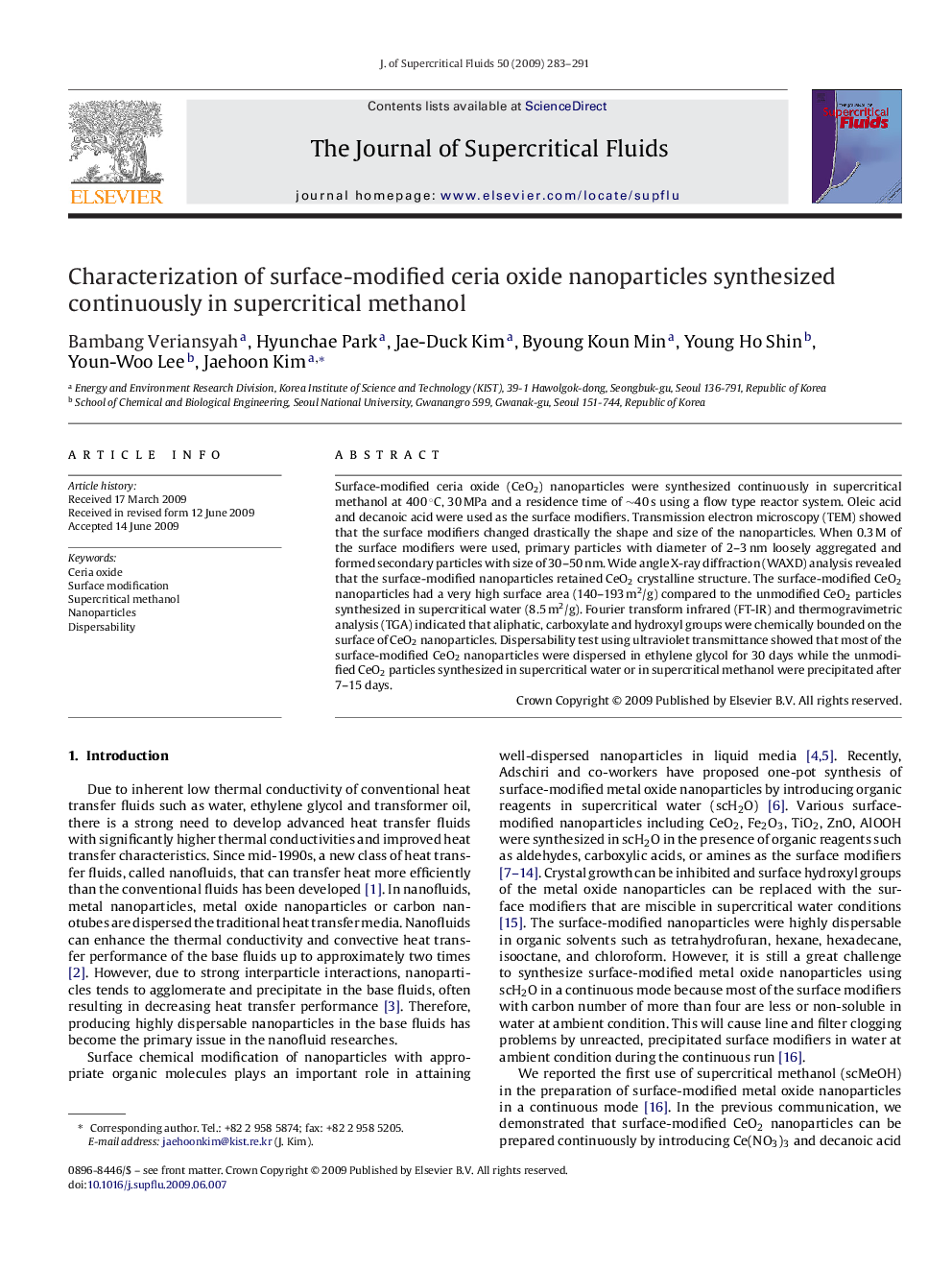| Article ID | Journal | Published Year | Pages | File Type |
|---|---|---|---|---|
| 231461 | The Journal of Supercritical Fluids | 2009 | 9 Pages |
Surface-modified ceria oxide (CeO2) nanoparticles were synthesized continuously in supercritical methanol at 400 °C, 30 MPa and a residence time of ∼40 s using a flow type reactor system. Oleic acid and decanoic acid were used as the surface modifiers. Transmission electron microscopy (TEM) showed that the surface modifiers changed drastically the shape and size of the nanoparticles. When 0.3 M of the surface modifiers were used, primary particles with diameter of 2–3 nm loosely aggregated and formed secondary particles with size of 30–50 nm. Wide angle X-ray diffraction (WAXD) analysis revealed that the surface-modified nanoparticles retained CeO2 crystalline structure. The surface-modified CeO2 nanoparticles had a very high surface area (140–193 m2/g) compared to the unmodified CeO2 particles synthesized in supercritical water (8.5 m2/g). Fourier transform infrared (FT-IR) and thermogravimetric analysis (TGA) indicated that aliphatic, carboxylate and hydroxyl groups were chemically bounded on the surface of CeO2 nanoparticles. Dispersability test using ultraviolet transmittance showed that most of the surface-modified CeO2 nanoparticles were dispersed in ethylene glycol for 30 days while the unmodified CeO2 particles synthesized in supercritical water or in supercritical methanol were precipitated after 7–15 days.
Graphical abstractFigure optionsDownload full-size imageDownload as PowerPoint slide
